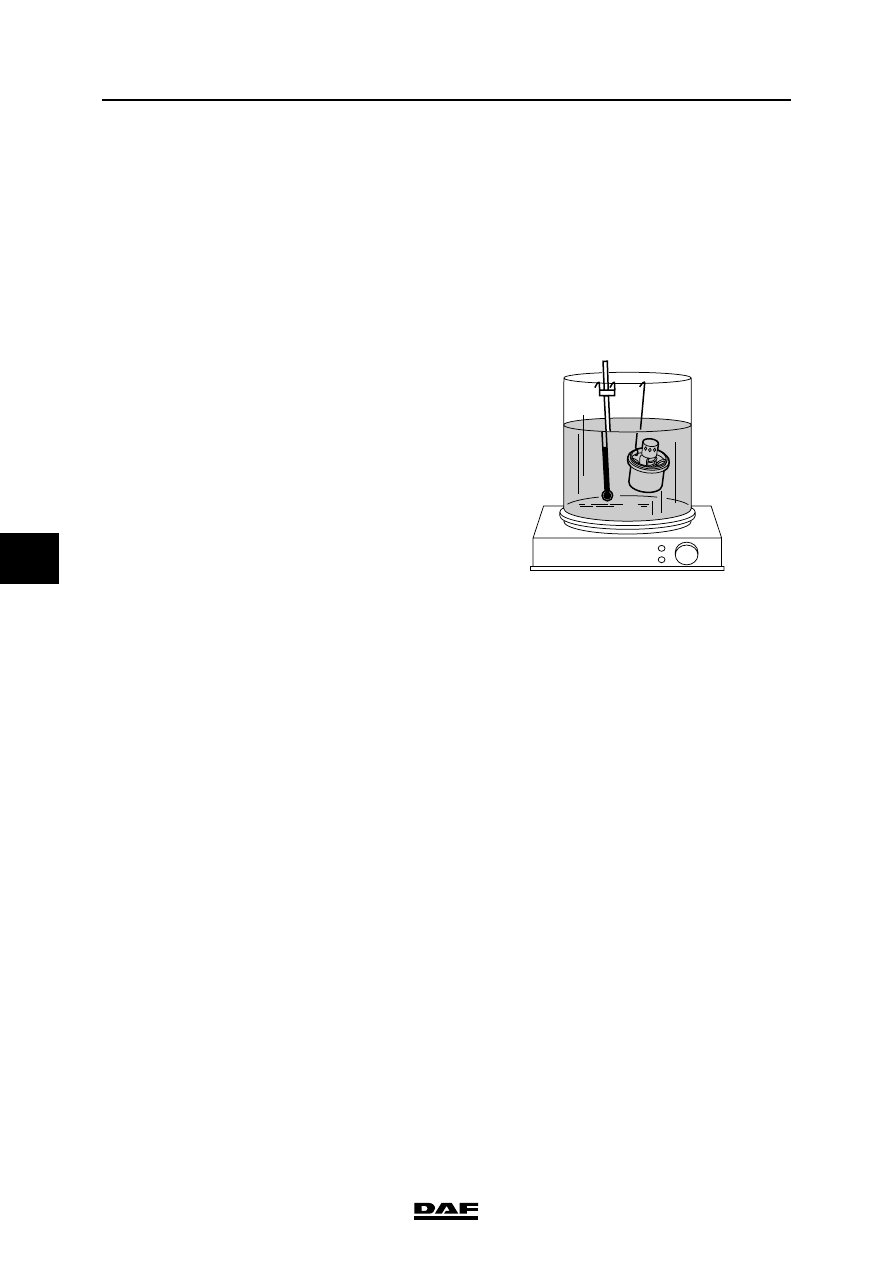DAF LF45, LF55 Series. Manual — part 204

©
200505
3-5
Description of components
CE ENGINE COOLING SYSTEM
ΛΦ45/55 series
2
6
As the air temperature rises, the bimetallic strip
(6) will continue to bend and the opening (4) in the
supply chamber (3) will be fully released.
The further the opening (4) in the supply chamber
(3) is released, the more silicone fluid will flow into
the working area (1) and past the rotor (2). As a
result of the increase in friction, the difference in
rotating speed (slip) between the drive flange (7)
and the supply chamber (3) will further decrease.
M201039
6
8
7
5
2
3
4
1
CE ENGINE COOLING SYSTEM
3-6
©
200505
Description of components
6
ΛΦ45/55 series
2

©
200505
4-1
Checking and adjusting
CE ENGINE COOLING SYSTEM
ΛΦ45/55 series
2
6
4. CHECKING AND ADJUSTING
4.1 PRESSURE-TESTING COOLING SYSTEM
When the coolant is hot, there is
overpressure in the cooling system.
Carefully remove the filler cap to
release the overpressure. Coolant is
a toxic fluid. Contact with the skin
should therefore be avoided. To
avoid damaging the cylinder block,
do not top up a warm engine with
cold coolant.
The cooling system can be checked for leaks with
a pressure-test pump.
If this is done when the engine is warm, any
cracks can be spotted more quickly.
1.
Open the grille.
2.
Remove the filler cap.
3.
Fill the cooling system to the correct level.
4.
Raise the engine temperature. This need not
be the operating temperature.
Note:
By fitting the pressure-test pump onto the filler
opening of the header tank, the pressure cap can
also be tested.
5.
Fit a pressure-test pump. Pressure-test the
system at the specified pressure. See
"Technical data".
6.
Check the cooling system for leakage.
}
M201149

CE ENGINE COOLING SYSTEM
4-2
©
200505
Checking and adjusting
6
ΛΦ45/55 series
2
4.2 INSPECTING THE THERMOSTAT
1.
Remove the thermostat. See "Removal and
installation".
2.
Inspect the sealing surfaces of the
thermostat housing for damage.
3.
Check the thermostat seat for damage.
4.
Check whether the thermostat is fully closed.
5.
Place the thermostat in a container filled with
clean water.
6.
Place a thermometer in the container and
heat the water. Check at which temperature
the thermostat opens and whether it opens
fully. See "Technical data".
M200513

Нет комментариевНе стесняйтесь поделиться с нами вашим ценным мнением.
Текст